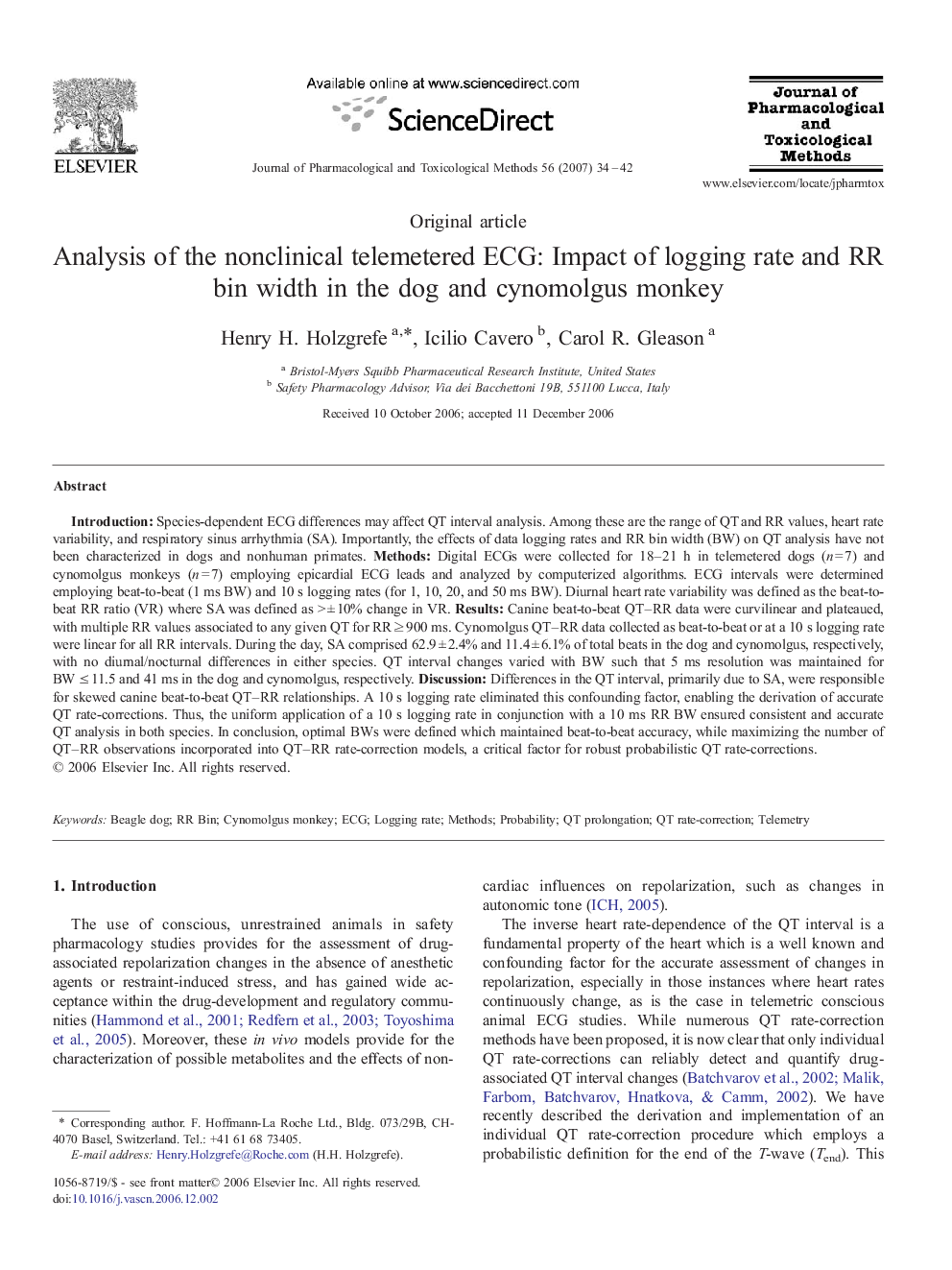| کد مقاله | کد نشریه | سال انتشار | مقاله انگلیسی | نسخه تمام متن |
|---|---|---|---|---|
| 2549932 | 1124532 | 2007 | 9 صفحه PDF | دانلود رایگان |

IntroductionSpecies-dependent ECG differences may affect QT interval analysis. Among these are the range of QT and RR values, heart rate variability, and respiratory sinus arrhythmia (SA). Importantly, the effects of data logging rates and RR bin width (BW) on QT analysis have not been characterized in dogs and nonhuman primates.MethodsDigital ECGs were collected for 18–21 h in telemetered dogs (n = 7) and cynomolgus monkeys (n = 7) employing epicardial ECG leads and analyzed by computerized algorithms. ECG intervals were determined employing beat-to-beat (1 ms BW) and 10 s logging rates (for 1, 10, 20, and 50 ms BW). Diurnal heart rate variability was defined as the beat-to-beat RR ratio (VR) where SA was defined as > ± 10% change in VR.ResultsCanine beat-to-beat QT–RR data were curvilinear and plateaued, with multiple RR values associated to any given QT for RR ≥ 900 ms. Cynomolgus QT–RR data collected as beat-to-beat or at a 10 s logging rate were linear for all RR intervals. During the day, SA comprised 62.9 ± 2.4% and 11.4 ± 6.1% of total beats in the dog and cynomolgus, respectively, with no diurnal/nocturnal differences in either species. QT interval changes varied with BW such that 5 ms resolution was maintained for BW ≤ 11.5 and 41 ms in the dog and cynomolgus, respectively.DiscussionDifferences in the QT interval, primarily due to SA, were responsible for skewed canine beat-to-beat QT–RR relationships. A 10 s logging rate eliminated this confounding factor, enabling the derivation of accurate QT rate-corrections. Thus, the uniform application of a 10 s logging rate in conjunction with a 10 ms RR BW ensured consistent and accurate QT analysis in both species. In conclusion, optimal BWs were defined which maintained beat-to-beat accuracy, while maximizing the number of QT–RR observations incorporated into QT–RR rate-correction models, a critical factor for robust probabilistic QT rate-corrections.
Journal: Journal of Pharmacological and Toxicological Methods - Volume 56, Issue 1, July–August 2007, Pages 34–42